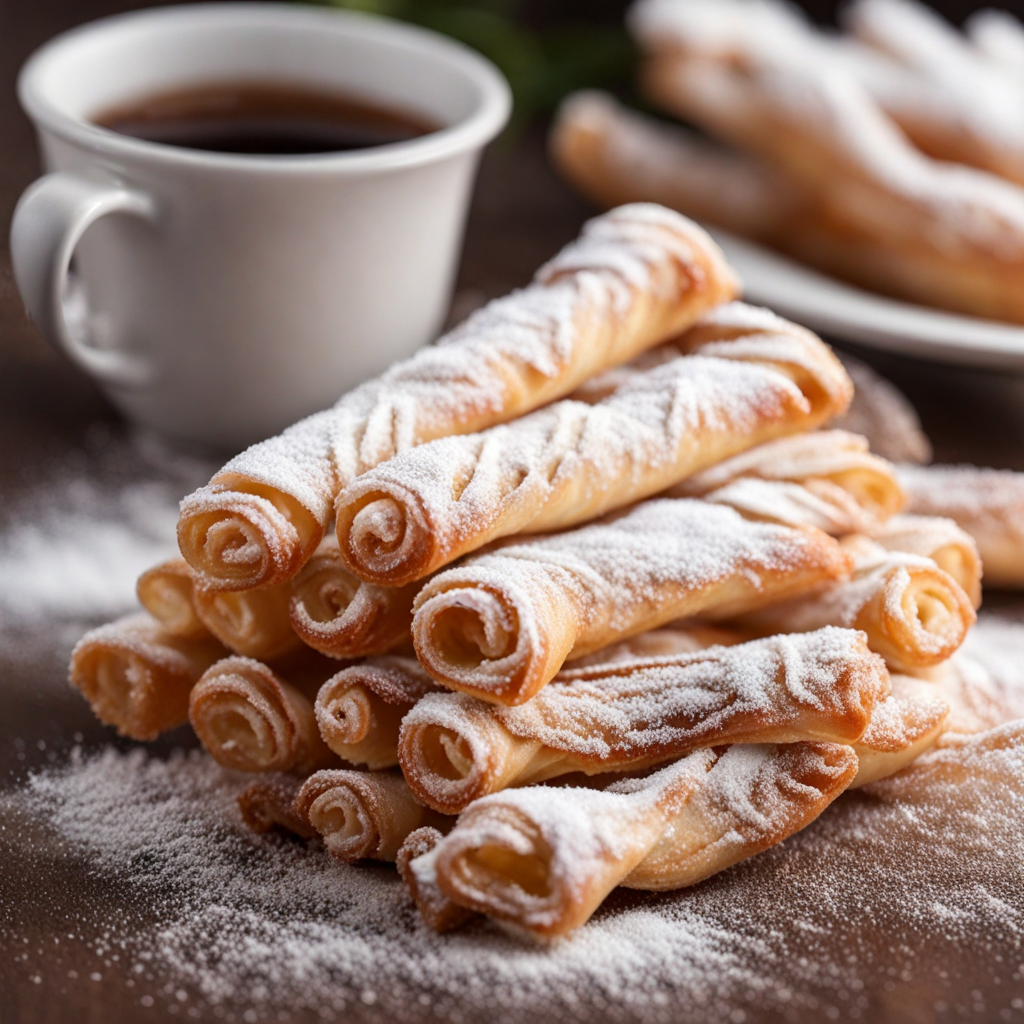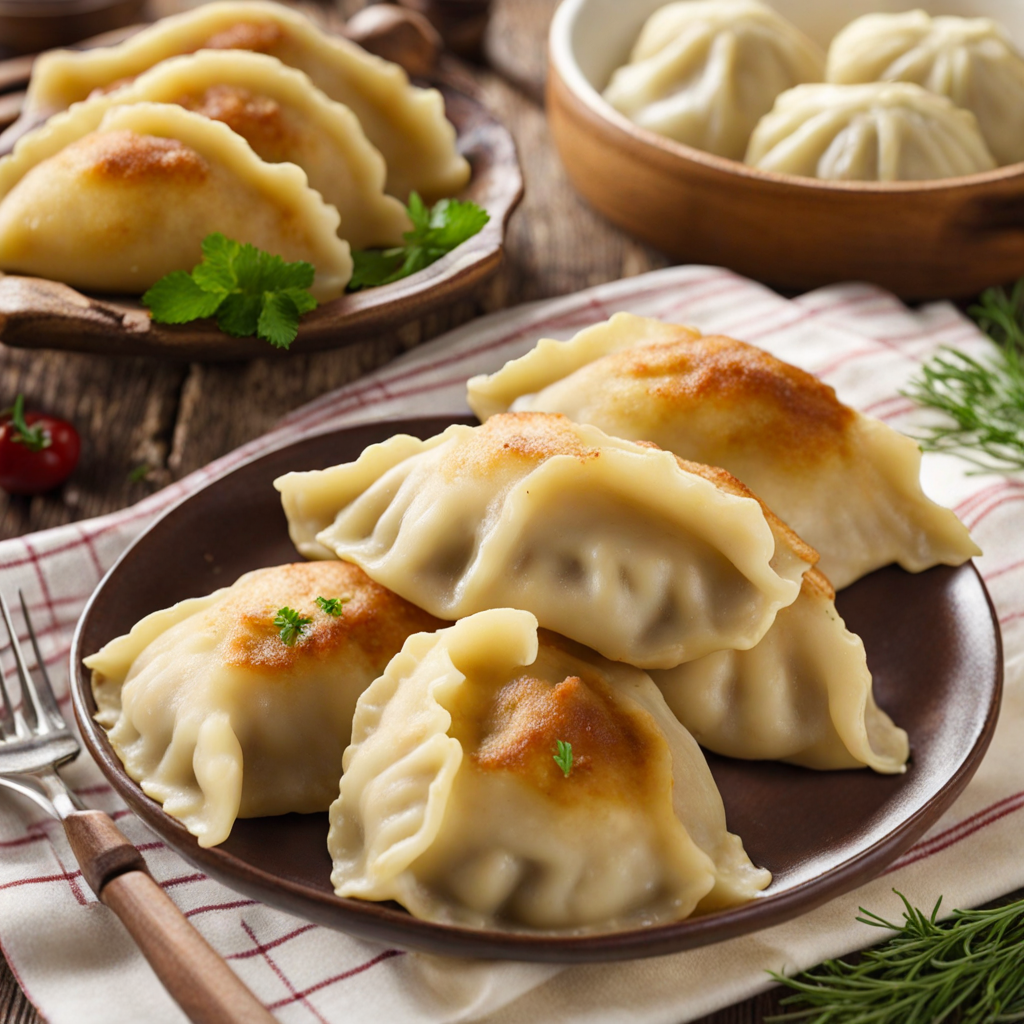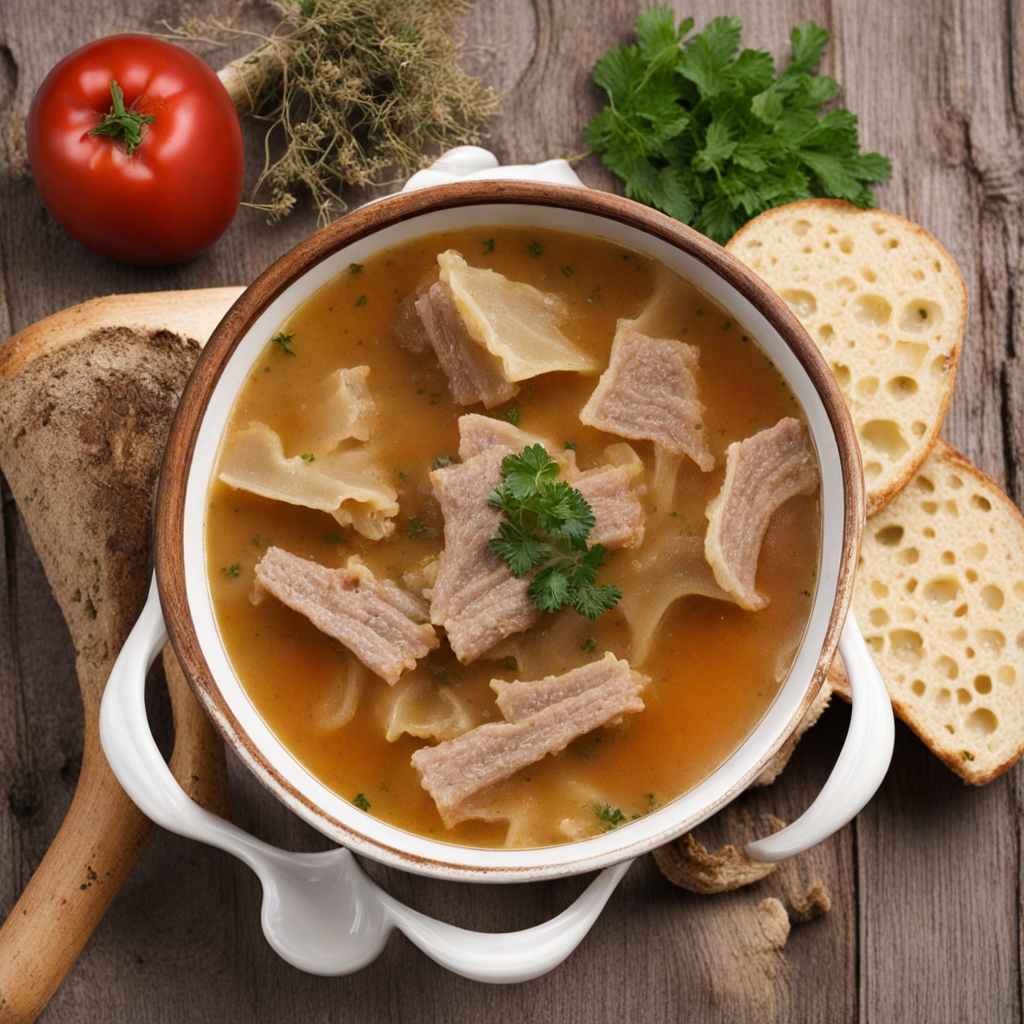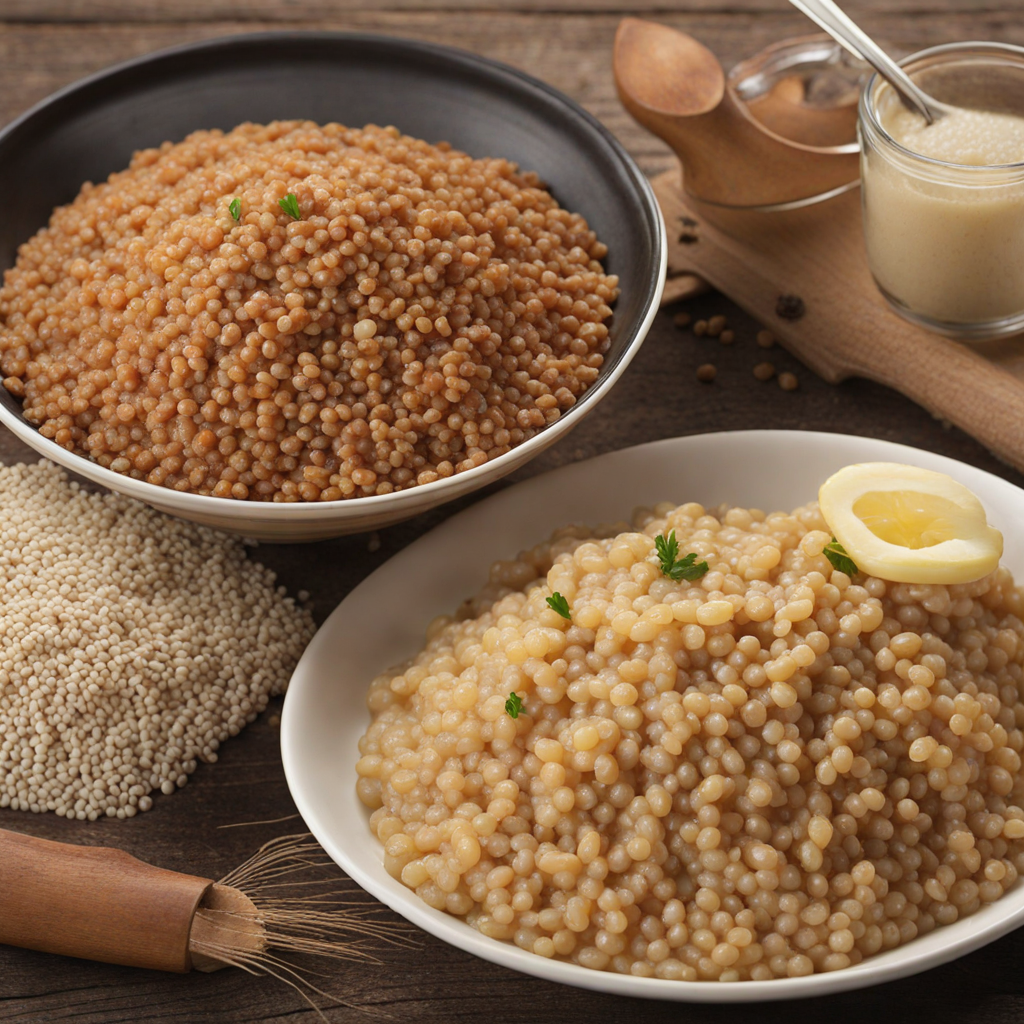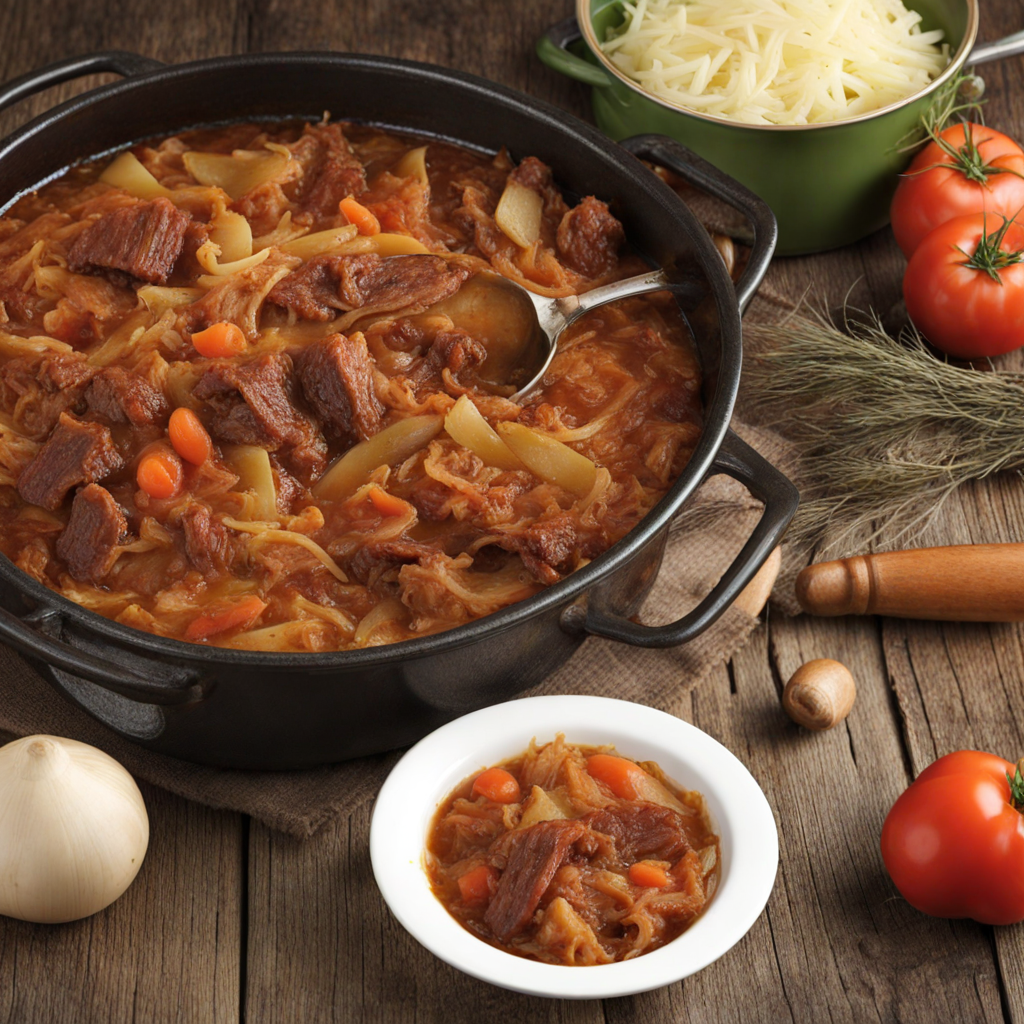Faworki
Faworki, also known as Angel Wings, is a traditional Polish pastry that is cherished for its delicate texture and light, crisp bite. The name "Faworki" derives from the Polish word for "ribbon," which aptly describes the twisted, ribbon-like shape of these confections. This pastry is particularly popular during the carnival season, especially before Lent, when it is customary to indulge in rich foods. Faworki has a rich history that dates back to the 19th century and has roots in various European cuisines, particularly those of French and Austrian influence. The flavor of Faworki is subtly sweet, with a hint of vanilla and a whisper of citrus, often enhanced by a dusting of powdered sugar. When freshly made, they offer a delightful crunch that contrasts beautifully with their airy structure. The taste is light and not overly sugary, making them an ideal treat to accompany coffee or tea. The experience of biting into a Faworki is akin to enjoying the crispness of a delicate cookie, yet with a unique texture that melts in the mouth. Preparation of Faworki requires a careful, methodical approach. The dough is typically made from a simple mixture of flour, egg yolks, sour cream, and a splash of vodka, which helps to create a tender texture while also preventing the pastry from absorbing too much oil during frying. The dough is rolled out thinly and then cut into strips. Each strip is twisted into a figure-eight
How It Became This Dish
The Sweet Legacy of Faworki: A Journey Through Polish Culinary History Faworki, also known as angel wings, are a beloved Polish pastry that embody the rich tapestry of Poland's culinary heritage. These delicate, crispy treats are made from a simple dough that is twisted into intricate shapes and then fried until golden brown. Dusted with powdered sugar, faworki are not just a delightful snack; they represent a significant cultural tradition, especially during the Carnival season leading up to Lent. #### Origins of Faworki The origins of faworki can be traced back to the medieval times in Europe, where similar pastries were made in various countries. The term "faworki" itself is derived from the Polish word "faworek," which translates to "little twig" or "little fan." This nomenclature reflects the pastry's distinctive shape, resembling delicate twigs or fans. While the exact origins are hard to pinpoint, many culinary historians suggest that the concept of frying dough for sweets can be traced back to ancient Roman cooking, which was later adapted and transformed by different cultures. In Poland, the tradition of making faworki likely gained prominence in the 16th and 17th centuries, coinciding with the influence of French and Italian cooking styles in the courts of Polish nobility. The use of simple, accessible ingredients like flour, eggs, and sugar allowed these pastries to spread from the upper echelons of society to the common folk, establishing faworki as a staple of Polish cuisine. #### Cultural Significance Faworki are intrinsically linked to the cultural practices surrounding Carnival, a festive season that culminates with the celebration of Fat Thursday (Tłusty Czwartek) in Poland. This day is dedicated to indulging in rich, sweet foods before the austere season of Lent begins. On Fat Thursday, it is customary for families and friends to gather and enjoy not only faworki but also pączki—Polish doughnuts filled with various sweet fillings. The tradition of making faworki and other pastries during Carnival serves as a communal activity, fostering family bonds and community spirit. In many households, recipes are passed down through generations, each family adding its unique touch to the preparation and presentation of these treats. The process of making faworki is often a labor of love, where family members gather to roll, twist, and fry the dough while sharing stories and laughter. In addition to their role in Carnival festivities, faworki have also found their way into Polish celebrations of various kinds, including weddings and Christmas, making them a versatile treat enjoyed throughout the year. #### The Evolution of Faworki As Poland underwent significant changes throughout the centuries, so too did the recipe and presentation of faworki. The 19th century saw Poland grappling with partitions and political upheaval, which influenced culinary practices. Despite these challenges, Polish cuisine remained a vital aspect of cultural identity. Faworki continued to be made, often adapted to local ingredients and tastes. In the 20th century, with the rise of globalization and the influx of various culinary influences, faworki began to evolve further. While the traditional recipe remains popular, contemporary bakers and chefs have experimented with different flavors and presentations. Some have introduced variations that incorporate chocolate, fruit, or even savory elements, attracting a new generation of food enthusiasts. Moreover, the advent of social media has played a pivotal role in the resurgence of interest in traditional foods like faworki. Food bloggers and influencers have showcased these pastries, elevating them to a status of trendy treats that appeal to both locals and tourists. This renewed interest has led to faworki being featured in Polish bakeries and cafes around the world, affirming their place in the global culinary scene. #### Making Faworki: A Culinary Craft The traditional method for making faworki involves mixing flour, eggs, a pinch of salt, and sour cream or vinegar to create a pliable dough. This dough is then rolled out thinly, cut into strips, and twisted into the iconic shapes before being fried in hot oil. The key to achieving the perfect faworki lies in the frying process; they must be cooked until crispy and light, allowing them to retain their airy texture. While the basic recipe is straightforward, the real artistry comes in the shaping and frying techniques. Some bakers prefer to use a pasta machine to roll the dough to a desired thinness, ensuring uniformity in size and texture. Others embrace the imperfections, as the uniqueness of each faworek adds to the charm of this traditional treat. #### Faworki in the Modern Era In contemporary Poland, faworki remain a beloved treat, cherished for both their taste and their cultural significance. Bakeries across the country prepare large batches of these delicate pastries in anticipation of Fat Thursday, often drawing long queues of eager customers. The popularity of faworki has encouraged local festivals celebrating traditional Polish foods, where culinary enthusiasts showcase their skills and share their family recipes. Internationally, faworki have begun to capture the attention of food lovers beyond Poland. As Polish communities spread across the globe, they have introduced faworki to new audiences, often adapting the recipe to include local flavors or ingredients. This cross-cultural exchange has enriched the pastry's legacy, allowing it to transcend borders while maintaining its Polish roots. #### Conclusion: A Sweet Symbol of Polish Heritage Faworki are much more than a simple pastry; they are a symbol of Polish heritage, community, and resilience. Their journey from medieval Europe to modern-day Poland reflects the evolution of culinary practices and the enduring importance of food in cultural identity. As faworki continue to delight generations with their crispy texture and sweet flavor, they serve as a reminder of the joy of sharing food, the strength of family traditions, and the rich history that shapes our culinary landscape. With each bite of faworki, one not only tastes the sweetness of the pastry but also the stories, traditions, and memories woven into its very fabric—making it a cherished treat that connects the past with the present, and the local with the global. Whether enjoyed during Carnival festivities or as a simple indulgence, faworki remain an integral part of Poland's culinary identity, celebrating the artistry and love that goes into every handmade piece.
You may like
Discover local flavors from Poland


